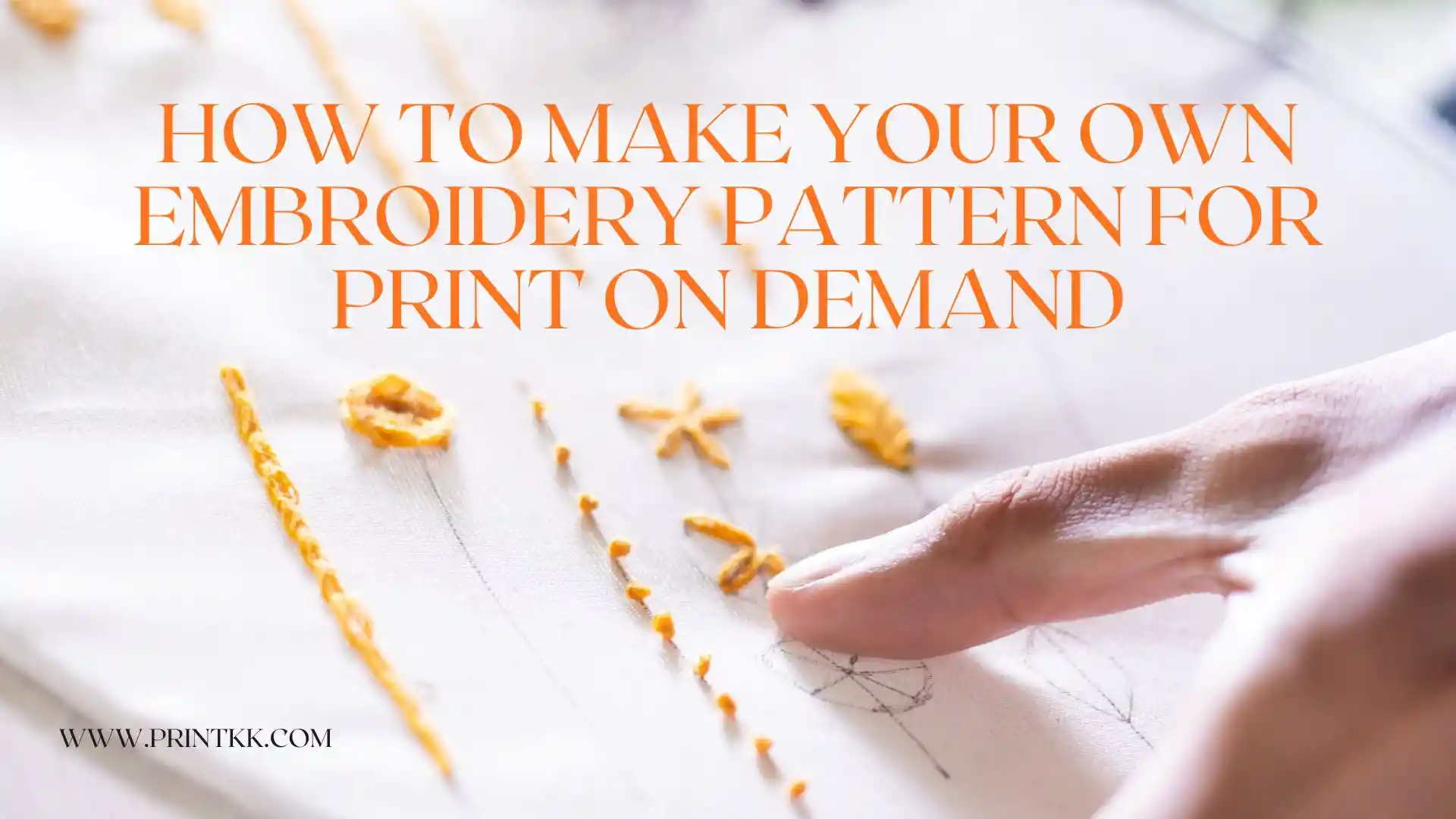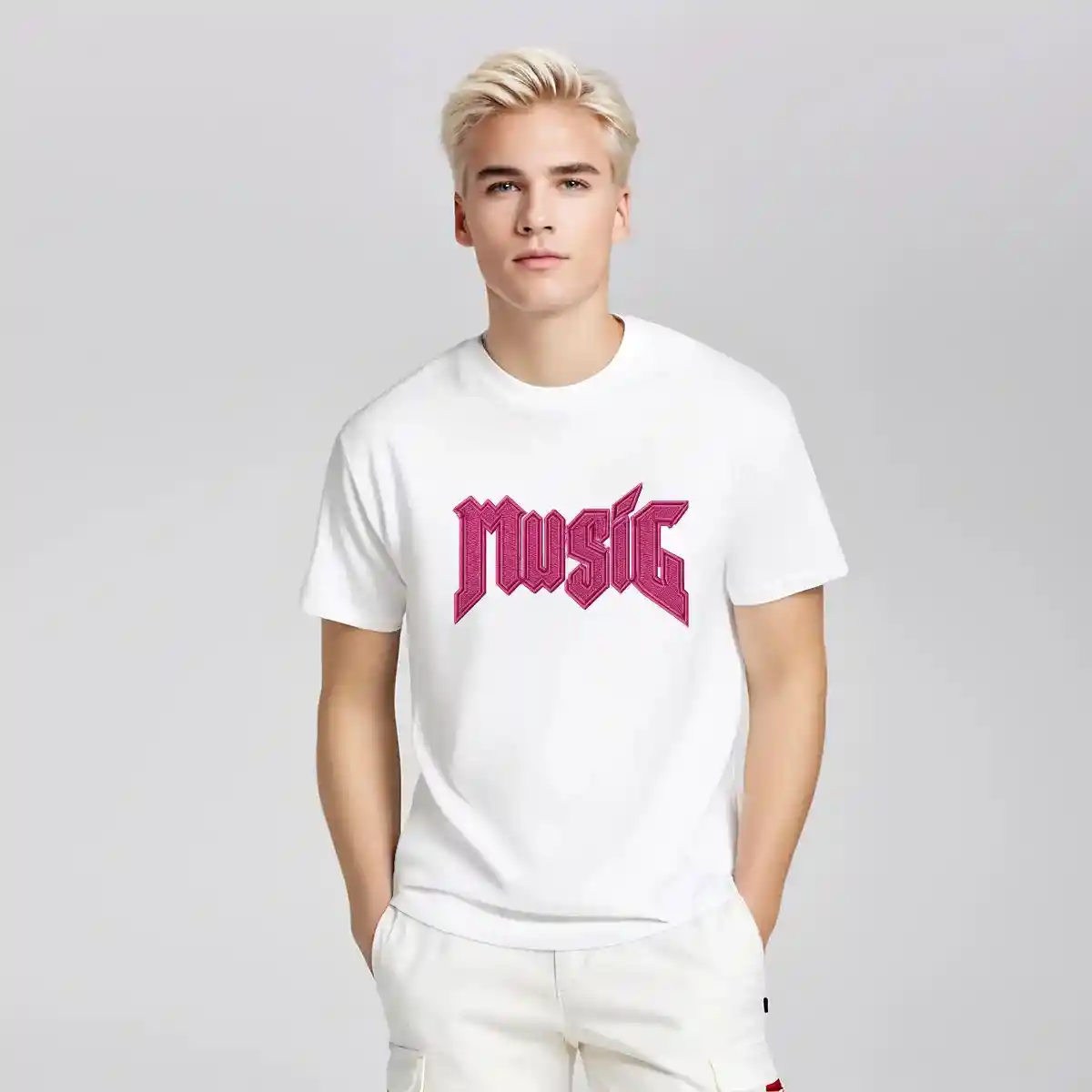
Creating unique embroidery designs can add a personal touch to your print-on-demand products, helping your items stand out in a crowded market.
If you've ever wondered how to make your own embroidery pattern, you're in the right place.
In this guide, we'll walk you through practical techniques—from turning your ideas into clear designs to preparing them for digital use—so you can bring your custom embroidery creations to life with ease and confidence.
How to Make Your Own Embroidery Pattern for POD
Start with a Clear Idea
Before you even pick up your pencil or tablet, decide what you want your design to look like.
Think about your target audience and the type of products you plan to sell. Do you want a simple line drawing, a cute character, or a floral pattern?
Sketch a rough version on paper first. Even a messy sketch helps you see how your idea will work when embroidered.
Choose the Right Tools
You don't need fancy equipment to start. You can use:
- Pencil and tracing paper for hand sketches
- Digital tools like Canva, Photoshop, or Illustrator
- Free embroidery software like Ink/Stitch for converting your design
Using the right tool makes your design easier to transfer to a print-on-demand product later.
If you're going digital, make sure your lines are clear and not too thin. Thick, simple lines will stitch better and look nicer on products.

Simplify Your Design for Stitching
Embroidery works differently than drawing. Tiny details often get lost when stitched. Simplify your design by removing unnecessary lines or tiny shapes.
Focus on the parts that make your design unique. Think about:
- Main outlines of your design
- Areas that can be filled with a few colors
- Sections that need spacing to avoid messy stitching
Remember, less can be more. A clean design often looks better than one with too much detail.
Convert Your Design for POD
Once your design is ready, you need to prepare it for the print-on-demand platform. Most platforms accept files like PNG or SVG. You can either:
- Scan your hand-drawn sketch and clean it digitally
- Export your vector design from software like Illustrator
- Use embroidery software to preview how the stitches will look
Make sure your design is the correct size for your products. Check the stitch density if you're planning to simulate embroidery in mockups.
Test Before You Sell
Before putting your design live, always test it. Create a sample product or a mockup to see how your design looks. Check for:
- Visibility of small details
- Colors matching your original design
- Overall placement and proportions
Testing helps you avoid surprises and ensures your customers get a product that looks professional.

How to Make Fabric Patterns Without Embroidery
Creating fabric patterns without embroidery is a great way to save time while still making your designs look cute and detailed.
You don't always need to hand-stitch every little spot—this method works especially well in small or tricky areas.
Think about tiny plush paws, spots, stripes, or even Q-style eyes on your fabric creations. You can put these patterns almost anywhere, giving you total freedom to place them where they look best.
Keep It Simple: Don't Overdo the Layers
When you're layering fabrics, less is more. Try to keep your pattern to three layers or fewer. If your design is big or colorful, you can cut a hole in the center of the base fabric and remove the inner part of the first layer.
This "fabric hole" technique is like mini patchwork, and it makes ironing much easier. It also means the layers don't stick together completely, which helps when you need to tear off temporary stabilizers or paper backing.
Locking the Edges Like a Pro
Edge finishing, or "locking," can really make your patterns look polished.
The closer your stitches are, the better the edge will look. If you have time—or a regular sewing machine—you can try hand-locking with a satin stitch using a thick thread.
This gives an effect similar to commercial appliqué embroidery. The key tips:
- Use fine stitching for neat edges.
- Don't rush; tight stitches look cleaner.
- Thick satin-threaded edges make your small pieces pop.
Mix and Match: Save Embroidery Time
Not every part of your design needs to be stitched.
The main goal is to save time on medium-sized areas. You can decide which parts to use fabric patterns for and which parts to embroider directly. By combining these two methods:
- You cut down the total embroidery time.
- You can make your patterns look more dynamic.
- You still get the handmade charm without spending hours on tiny details.
Using fabric patterns without embroidery is all about working smarter, not harder. With a few simple tricks, you can make your prints look professional while keeping your project fun and stress-free.
Key Elements of a Great Embroidery Design
When you're creating an embroidery pattern for print on demand, there are a few things that can make your design really stand out. Paying attention to these details will save you time and make your designs look professional.
Clear and Simple Shapes
Embroidery works best when shapes aren't too busy. If your design has too many tiny details, some of them might get lost when stitched. Focus on bold outlines and recognizable forms that stay clear at any size.
Balanced Composition
A great design feels balanced. You don't want one side of your pattern to feel heavy while the other looks empty. Try arranging your elements so that the eye moves naturally across the design.
Color Choices That Pop
Pick colors that work well together and give enough contrast. Even subtle differences can make a huge impact. Keep in mind that colors on screen might look different when stitched, so test before finalizing.
Stitch-Friendly Details
Tiny dots, thin lines, or very intricate textures can be tricky to embroider. Think about how each stitch will translate and simplify details where necessary. This will make your pattern easier to reproduce without losing its charm.
Personality and Story
The best designs tell a little story or carry some personality. Ask yourself: what feeling do I want this piece to give? When your design connects with people, it's more likely to sell and be loved.

Easy Embroidery Pattern Transfer Method
Why Clear Lines Matter
Transferring your embroidery pattern is one of the most important and time-consuming steps. Clear lines make stitching easier and reduce eye strain while working.
When your pattern is neat, you can focus on stitching rather than guessing where each line goes.
There are many ways to transfer a design, but some methods are faster and more convenient, especially for print-on-demand embroidery designs.
Materials You'll Need
To get started, gather a few basic materials:
- Tracing paper (or vellum) for outlining your design
- Printable A4 water-soluble paper
- Pencil or a fine Sakura drawing pen (recommended sizes: 0.25mm or 0.3mm)
Using a pen instead of a pencil can make the lines sharper and more visible. Keep in mind that this method works best with fabrics that can be washed, and it is not suitable for materials or threads that may fade in water.
Trace Your Favorite Designs
Start by collecting your favorite designs or sketches. Place a sheet of transparent tracing paper over the design and carefully trace it.
You can add notes about the source, stitch types, or colors directly on the tracing sheet. This helps you find the design quickly and reference it while stitching.
The transparency of tracing paper makes it easy to see and trace even fine details.
Transfer to Water-Soluble Paper
Once your designs are traced, it's time to make them ready for embroidery:
- Place the traced paper on the printer scanner
- Load an A4 sheet of water-soluble paper
- Make a black-and-white copy to create a water-soluble embroidery template
You can cut out the pattern or leave it as a whole sheet depending on preference. When you're ready, simply stick the design to the fabric and start stitching.

Tips for Efficiency
To save money and time:
- Fill a whole sheet of tracing paper with designs before copying, as water-soluble paper can be expensive.
- Keep the traced designs safe so you can reuse them later. Just copy again onto water-soluble paper whenever needed.
- Choose a pen over a pencil for sharper, more visible lines, which makes stitching much easier.
Price Embroidery Work for Small Businesses
Pricing your embroidery work can feel tricky at first, but it doesn't have to be confusing. Start by knowing your costs.
Factor in fabric, thread, stabilizers, and your time. Don't forget small things like needles or machine maintenance—they add up over time.
Next, think about how much your time is worth. If a design takes two hours, calculate what you want per hour. Many small business owners use this simple formula:
- Cost of materials
- Hourly rate × hours spent
- Any extra for overhead or special techniques
It's okay to adjust your prices as you go. Small businesses need flexibility—sometimes a simpler piece can sell for more if it's unique or uses premium materials.
Pricing isn't just about covering costs; it's about showing the value of your creativity and skill.
Cost/Factor | Description | Example (USD) |
Materials | Fabric, thread, stabilizer, needles | 3 |
Labor | Time spent designing and stitching | 2 hours × $15 = 30 |
Special Techniques / Design | Extra charge for complex or unique patterns | 5 |
Total Cost | Sum of all costs | 38 |
Suggested Price | Total cost × 1.3–1.5 | 50–55 |
This table gives you a clear view of your costs and profit margin. You can adjust each factor depending on the design, size, or materials to make sure your pricing stays fair and sustainable.
Read More:
- How to Make Custom Embroidery Designs: Guide for Beginners
- How to Start an Embroidery Business and Make It Profitable?
Expert Tips
Creating your own embroidery designs can be fun and rewarding. By learning how to make your own embroidery pattern, you gain full control over your style and creativity.
Start with simple ideas, choose the right tools, and transfer your designs carefully onto fabric. Take your time to test and refine each pattern.
Once you master the basics, you can create unique embroidery for print-on-demand products with confidence. Remember, clear lines and proper preparation make stitching easier and more enjoyable. Keep experimenting, and your skills will improve steadily.
FAQs
Is there any free embroidery software?
Yes, there are free options you can try. Some programs let you create and edit basic designs without cost. They are great for beginners who want to experiment before investing in advanced tools.
How do I turn an image into an embroidery file?
You can convert images using embroidery software that supports digitizing. The software traces your design and creates stitch paths. Adjust settings to match your fabric and thread for the best results.
What do you print embroidery patterns on?
Patterns can be printed on transfer paper, tracing paper, or even directly on fabric using light pencil or erasable pens. Choose a method that lets you easily follow the lines while stitching.
How to make embroidery designs on clothes at home?
Start with a clean garment and secure it in a hoop. Transfer your pattern using tracing or transfer paper, then stitch carefully. Work slowly to keep designs neat and consistent.










 Made in USA
Made in USA


 Global Shipping
Global Shipping



























